Cellhouse & Recreation Yard
It is easy to imagine the prisoners exercising in this austere yard outside the forbidding cellhouse building. During its days as a military prison, many Indians were incarcerated on Alcatraz and in 1969 Indians returned to the then abandoned island. They claimed the island in the name of Indians of all tribes, with the aim of establishing an Indian university, a cultural centre, and a museum. There was a lot of support for the Indians, so the government held some negotiations with them, but mainly played a waiting game. By mid 1971 the occupation was falling apart and public sympathy had waned so in June 10 the US authorities removed the few remaining Indians from the island.
Alcatraz from Coit Tower
It was Spanish explorer Lt. Juan Manuel de Ayala who in 1775 named the island in the middle of San Francisco Bay ‘Isla de los Alcatraces’ (Island of the Pelicans) after the Brown Pelicans that abounded there. The name stuck albeit becoming a little Anglicised over the years. Although it is only 1.6 kilometres (1 mile) from the wharves of San Francisco, the waters around it are very cold making escape almost impossible. During its time as a civilian prison, no successful escapes were recorded.
Alcatraz Cells
This is where the prisoners spent most of their time and an audio tour will tell you about the prison regime and who occupied which cell. The vast majority of prisoners have not been remembered by history but there were a few famous ones. Al Capone spent over 4 years on the island following his conviction for tax evasion. Robert Franklin Stroud spend 17 years at Alcatraz after he killed a prison officer at Leavenworth. He was known as the Birdman of Alcatraz even though he was not allowed to continue his avian studies during the 17 years he spent on the island.
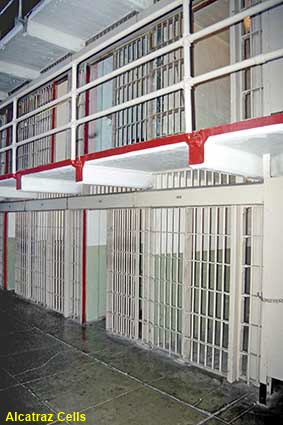
Sally Port Building
Alcatraz is now operated by the National Park Service as part of Golden Gate National Recreation Area but access is by commercial ferries from Fisherman’s Wharf. One of the first buildings that you see when you arrive is the Sally Port, which was originally the armoured gate protecting the island. This is the oldest building on the island dating right back to 1857 and when it was built it had a drawbridge and dry moat.
Alcatraz
When the US annexed California it soon saw the strategic value of the rock called Alcatraz Island in San Francisco Bay. Construction of a fort started in 1853 and by the beginning of the Civil War the military had decided that Alcatraz Island was an ideal place for keeping prisoners. By 1907 Alcatraz was no longer used as a fort, it had become solely a military prison. When the military prison closed in 1934, the Depression and Prohibition had caused an upsurge in organised crime, so it was converted into a high security civilian prison housing major criminals such as gangster Al Capone and Robert Stroud, the Birdman of Alcatraz. It closed in 1963 because its buildings needed updating and the island location made the cost prohibitive. It is now a National Park and open to the public.
Click on Minimap to navigate
Home > US States > The West > California > San Francisco >
Downtown San Francisco from Alcatraz
From the prison San Francisco seems close, but for the prisoners it was a whole world away. Thirty-six prisoners were involved attempts to escape. Two made it off the island only to be recaptured, seven were shot and killed, two drowned and five were unaccounted for presumed dead. The rest were recaptured before they could leave the island. The movie ‘Escape from Alcatraz’ is based on the escape in June 1962 of Frank Morris and the two Anglin brothers. They were successful in escaping both the prison and the island, but they have not been heard of since and it it is considered unlikely that they survived the escape.
Laundry & Industries Building
The long low building was the military laundry while the further building was the Industries Building containing workshops where inmates could make some money. Because it was close to the shore the Industries Building proved to be a popular place to launch escape attempts.
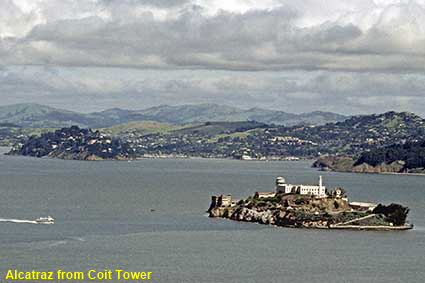
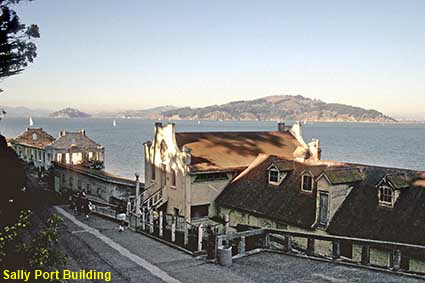
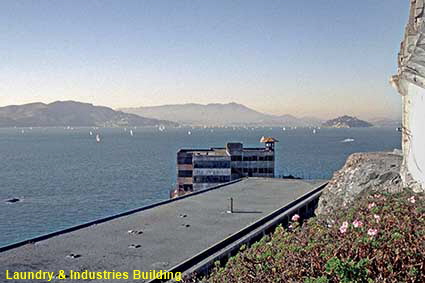
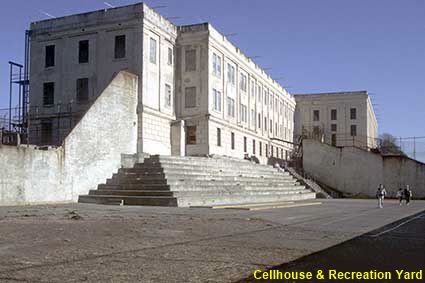
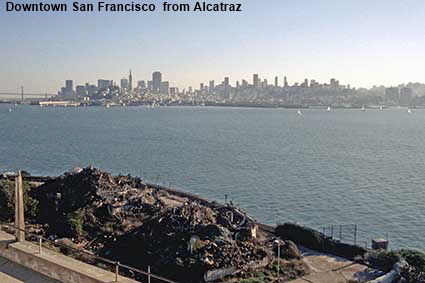


To move forwards or backwards through the San Francisco trail click the arrows above, or select your next destination on the Minimap.
DLU070327
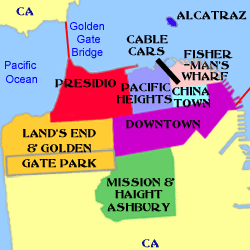

© Mike Elsden 1981 - 2025
The contents of this page may not be reproduced in full or in part without permission